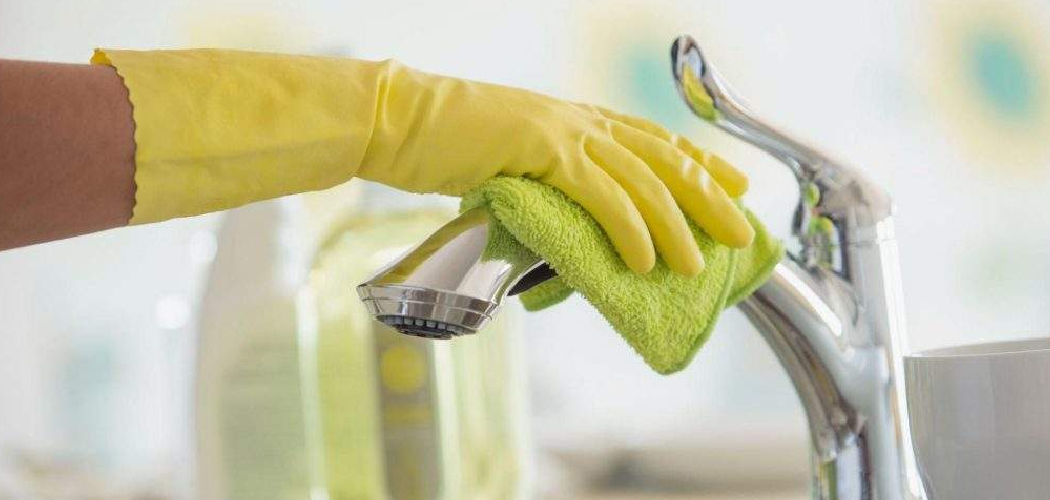Regularly cleaning your kitchen faucet is an important part of keeping your kitchen clean and preventing bacteria buildup. While many people use vinegar for this task, there are ways to effectively clean your kitchen faucet without using any harsh chemicals.
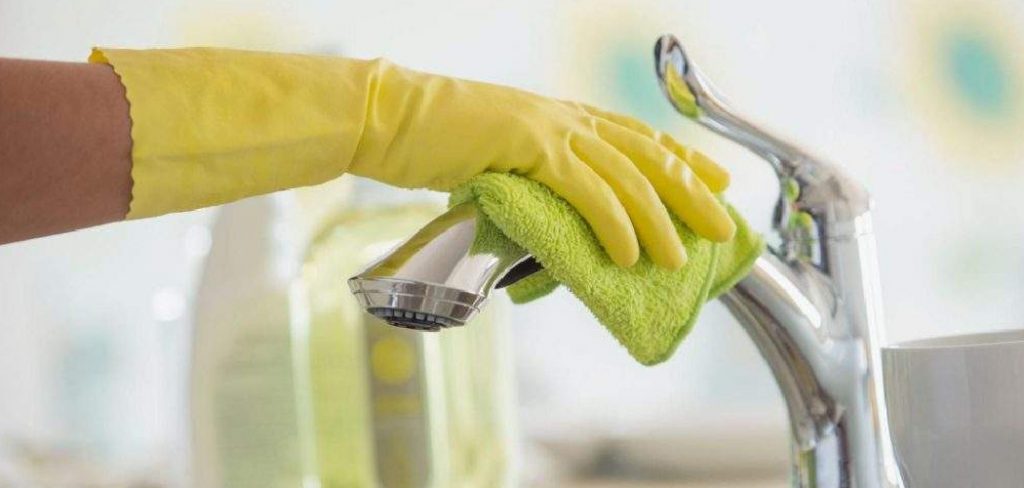
In this blog post, we’ll take a look at some easy and effective methods you can use to keep your faucet head sparkling clean without relying on vinegar. So keep reading to learn more about how to clean kitchen faucet head without vinegar.
Can You Clean the Kitchen Faucet Head Without Vinegar?
Cleaning the kitchen faucet head is often a tedious chore, but luckily it does not have to involve vinegar. Many non-corrosive medications, such as CLR and Limeaway, can be used to remove tough soap scum and limescale deposits from your kitchen sink faucet’s head.
Just apply a small amount of the cleaner directly onto a damp cloth and rub gently in a circular motion over the surface. Next, use a wet washcloth or sponge to rinse any streaks or residue. Regularly cleaning your kitchen sink head with these alternative products will keep it looking brand new!
Why Should You Clean the Kitchen Faucet Head Without Vinegar?
Cleaning the kitchen faucet head is a chore that should not be neglected. Keeping it free of bacteria, limescale, and mineral deposits is essential to access clean, safe water. But why should you clean your faucet head without vinegar?
Not only is vinegar corrosive to certain metals and finishes, but it can also leave behind residue that can accumulate over time and become difficult to remove. Additionally, many modern faucets come with components such as aerators or diverters that vinegar’s acidic properties can easily damage.
The best way to get your faucet head sparkling clean is to rely on natural cleaning products like baking soda or lemon juice, which are gentle yet effective in cutting through grease and grime without damaging delicate parts of the fixture.
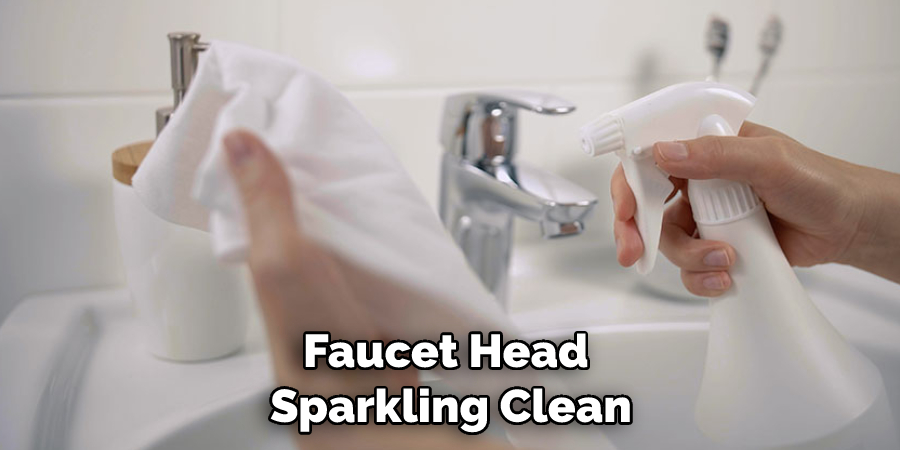
6 Ways to Follow on How to Clean Kitchen Faucet Head Without Vinegar
1. Create a Baking Soda Paste
Baking soda is a natural cleaner that can help cut through grime on your faucet head. To create a paste, mix baking soda with a small amount of water until it forms a thick consistency that can be easily spread over the surface of the faucet head.
Once the paste is applied, let it sit for 10 minutes before scrubbing gently with a soft cloth or sponge. After scrubbing, rinse the area with warm water and dry it with a soft towel or cloth.
2. Use Lemon or Lime Juice
Lemon or lime juice has natural acidic properties that make it great for cleaning surfaces like kitchen faucets. You can cut one of these fruits in half and rub it directly onto the faucet head to help remove stubborn dirt and debris.
Let the juice sit on the surface for 10 minutes before rinsing off with warm water and drying with a towel or cloth. For even more cleaning power, you can also combine lemon juice with baking soda to create an effective paste for tough stains and grime buildup.
3. Try Toothpaste
Toothpaste is another great alternative to vinegar when it comes to cleaning your kitchen faucet head. Simply apply some toothpaste onto a damp cloth or sponge and scrub away any stubborn dirt or grime on the surface of the faucet head.
Toothpaste contains mild abrasives which can help break down dirt particles without damaging the finish on your fixture. Rinse off afterward with warm water and dry thoroughly with a towel or cloth for best results.
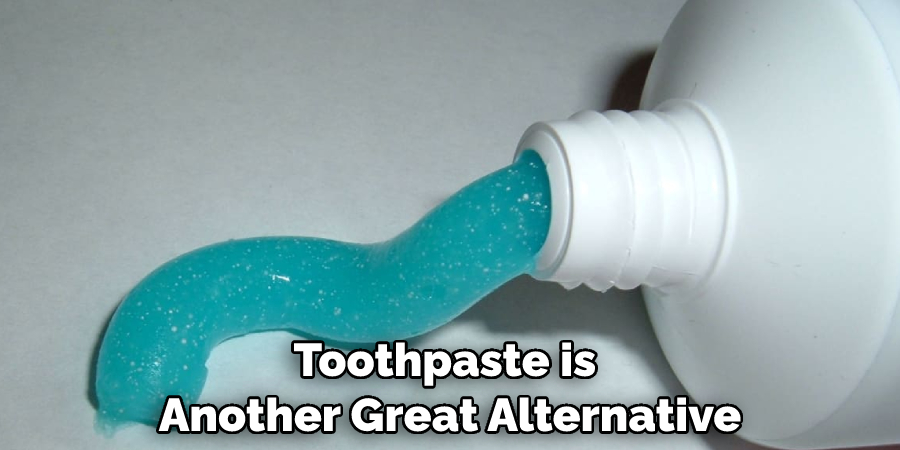
4. Rub with Olive Oil
Olive oil is a great natural cleaner and can be used to help polish your kitchen faucet head. To use, just mix some olive oil with a few drops of lemon juice or vinegar to create a mild cleaning solution. This solution should be applied onto the surface of the faucet head with a clean cloth or sponge and rubbed gently in circular motions.
Doing this will help to remove any built-up dirt and grime, leaving the faucet head looking shiny and new. For an extra-thorough clean, you can also use steel wool or a scouring pad for tougher stains. Be sure to rinse with water afterward to avoid any residue that may be left behind.
5. Use Rubbing Alcohol
Rubbing alcohol is an effective cleaner for many surfaces, including kitchen faucets. It’s best to dilute it before use, so mix equal parts of water and rubbing alcohol in a spray bottle first.
Spray the solution on the faucet head, allow it to sit for a few minutes, and then scrub with a sponge. Finally, rinse off with water and buff dry with a clean cloth. This method should leave your kitchen faucet head sparkling clean without the use of vinegar!
Remember that rubbing alcohol can damage some finishes, so always test it on a small area first. If you’re uncertain how the finish will react, use a vinegar-free cleaner that’s specifically designed for your type of faucet or surface. Using natural alternatives such as baking soda and lemon juice can also avoid any potential damage.
6. Use Dish Soap
Dish soap is an effective and safe cleaner for kitchen faucets. To use, mix a few drops of dish soap with warm water in a bowl to create a mild cleaning solution. Dip a soft cloth or sponge into the solution, then scrub the faucet head gently.
Rinse with clean water and wipe dry. Dish soap can be used to remove stubborn grease, grime, and mineral deposits from kitchen faucets without leaving behind any harsh residues.
That’s it! You’ve now learned how to clean kitchen faucet head without vinegar. All of these alternatives are easy to use and will help you get your fixture looking as good as new.
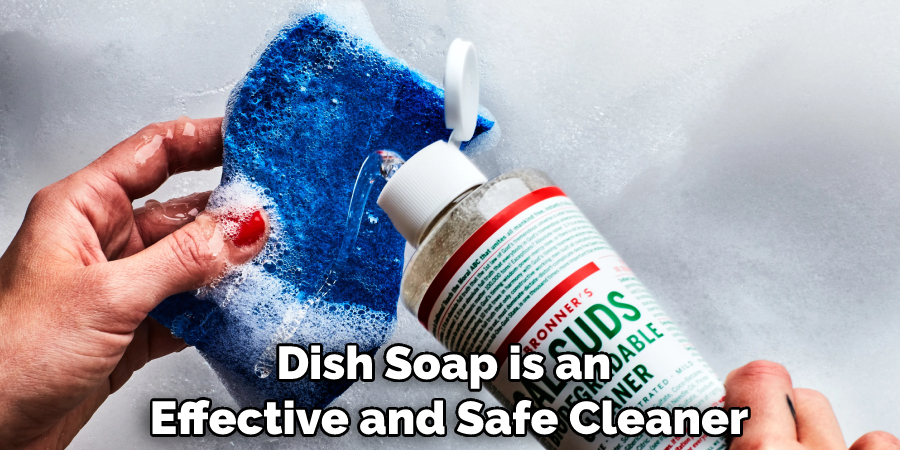
Remember, when it comes to cleaning, always use gentle products and scrub lightly to avoid damaging the finish or surface of your faucet.
Things You Need to Know Before Cleaning Kitchen Faucet Head Without Vinegar
It’s important to have the right knowledge before you delve into cleaning a kitchen faucet head. If you’re venturing without vinegar, warm water and baking soda may be a more gentle approach. Depending on the type of finish, this method should be tested first in an inconspicuous area to ensure it produces the desired result.
Ensure you disassemble the faucet head before gently scrubbing it with a soft cloth or brush, warm water, and baking soda. You can also use products like Barkeeper’s Friend, but first, test it on a hidden zone to avoid damaging the finish, and never use steel wool as that will scratch any surface.
Once your cleaning process is complete, be sure to dry with a lint-free cloth to prevent water spots from lingering and accumulating on surfaces over time.
Benefits of Cleaning Kitchen Faucet Head Without Vinegar
Cleaning a kitchen faucet head without vinegar comes with many advantages. For one, vinegar has a strong scent and taste that can linger on metallic surfaces, making the sink area often not ideal for preparing food.
In addition, products specifically designed for bathroom fixtures are typically mild enough to clean any surface in the kitchen without fear of damaging it. Finally, specialized cleaners improve your faucet’s appearance by restoring its luster better than more generic cleaning supplies.
This cleaning method is safer and more effective than most home remedies but can also add protection to the fixtures for longer-lasting results.
Some Common Mistakes People Make When Trying to Cleaning Kitchen Faucet Heads without Vinegar
Cleaning kitchen faucets without the use of vinegar can be tricky. People often make common mistakes when trying, such as using too much force on the faucet head or using inappropriate cleaning tools.
This can damage the finish on the faucet and cause any buildup to become embedded even deeper into its surface. Therefore, it’s important to take a gentle approach and choose tools that won’t scratch or gouge the faucet, such as a soft cloth or sponge. By paying attention to these details, you’ll have much better results when taking on this job.
How Often Should You Clean Your Kitchen Sink and Faucet?
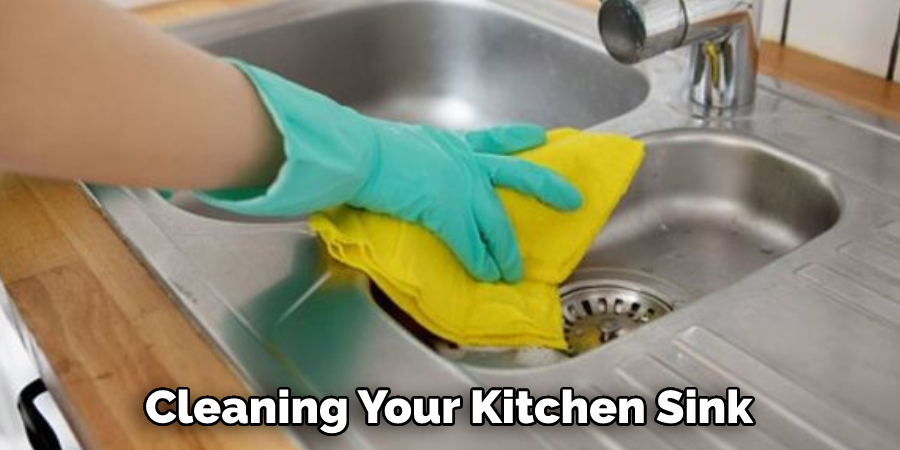
Cleaning your kitchen sink and faucet should be part of your regular cleaning routine since it sees consistent use in a kitchen environment. At least once a week, spray the sink with an all-purpose cleaner to disinfect and remove germs.
Use a moist cloth or nonabrasive sponge to scrub the sink and faucet. The exterior of your faucet should also be wiped down weekly, preferably with stainless steel polish if you have it. Doing this more often will help maintain your sink’s shine and extend its life.
Finally, remove any splashback from the walls behind the sink with mild soap and water using a rag or sponge every few weeks. Regular care of your kitchen fixtures will ensure they last longer and look as good as new!
Conclusion
Cleanliness is key when it comes to maintaining your kitchen, especially around areas like sinks where bacteria can grow quickly if left unchecked.
Fortunately, there are several easy ways to keep your kitchen sink looking its best without relying on harsh cleaners like vinegar – all you need are some common household items such as baking soda, lemon/lime juice, and toothpaste!
With just these few simple ingredients, you’ll be able to keep your kitchen sink sparkling clean in no time! Thanks for reading our post about how to clean kitchen faucet head without vinegar.

